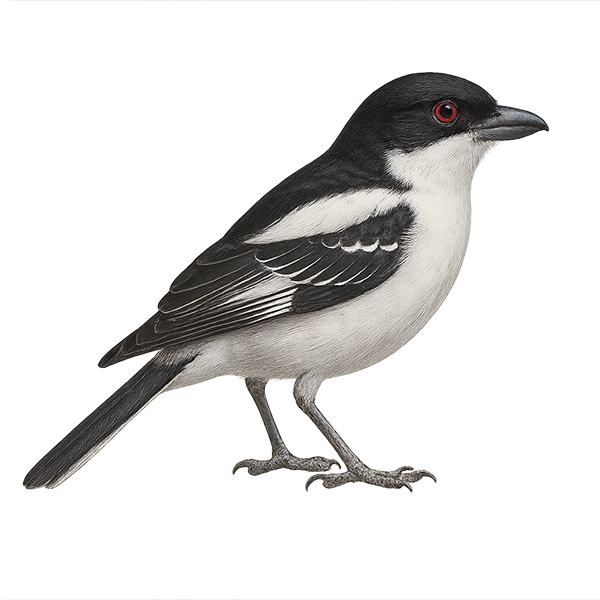Your wildlife photography guide.
Explore the yellow-bellied shrike in detail, study its behavior, prepare your shots.
Where to observe and photograph the yellow-bellied shrike in the wild
Learn where and when to spot the yellow-bellied shrike in the wild, how to identify the species based on distinctive features, and what natural environments it inhabits. The WildlifePhotographer app offers tailored photography tips that reflect the yellow-bellied shrike’s behavior, helping you capture better wildlife images. Explore the full species profile for key information including description, habitat, active periods, and approach techniques.
Yellow-bellied Shrike
Scientific name: Dryoscopus gambensis

IUCN Status: Least Concern
Family: MALACONOTIDAE
Group: Birds
Sensitivity to human approach: Suspicious
Minimum approach distance: 10 m
Courtship display: June to August
Incubation: 13-15 jours
Hatchings: June to September
Habitat:
Savannas, open forests, shrublands
Activity period :
Primarily active during the day, with peak activity in the morning and late afternoon.
Identification and description:
The Yellow-bellied Shrike, or Dryoscopus gambensis, is a medium-sized bird known for its distinctive plumage. It features a dark gray back, white belly, and black wings with shiny highlights. This bird is often found in the savannas and open forests of sub-Saharan Africa. It primarily feeds on insects, which it skillfully captures with its robust beak. The Yellow-bellied Shrike is a territorial bird, often seen alone or in pairs. Its song is melodious and varied, making it easily identifiable for birdwatchers. Although generally discreet, it may become more visible during the breeding season.
Recommended lens:
400 mm – adjust based on distance, desired framing (portrait or habitat), and approach conditions.
Photography tips:
To photograph the Yellow-bellied Shrike, it is advisable to use a 400mm lens or longer to capture precise details without disturbing the bird. Look for it in savannas or open forests, where it is often perched on exposed branches. Be patient and discreet, as this bird can be suspicious. Take advantage of the early morning or late afternoon hours for soft, natural lighting.
The WildlifePhotographer App is coming soon!
Be the first to explore the best nature spots, track rutting seasons, log your observations, and observe more wildlife.
Already 1 432 wildlife lovers subscribed worldwide

